A FINELY DETAILED 1:96 SCALE BUILDER'S STYLE MODEL OF H.M.S. JERVIS BAY [1922] the laminated and carved 64in. hull with bilge keels, rudder, propellers and boarding companionways, planked decks, moulded brass and wood fittings as appropriate including anchors with crane and winches, ventilators, deck rails, davits on rests, water tanks, deck lights, superstructure with bridge and over-bridge, boarding stanchions, stayed funnel with safety valve extension pipe and hooter, fitted lifeboats in davits, and other detals, mounted on four turned brass columns, on display base with glass cover, overall measurement -- 26 x 69½ x 12in. (66 x 77 x 30.5cm.) When the Second World War began in September 1939, the British public had never heard of an otherwise undistinguished liner named Jervis Bay whereas, in barely a year, she had become a ‘household name’ and her gallant fight against overwhelming odds had become synonymous with Churchill’s indomitable spirit to win the War whatever the cost. Ordered by the Commonwealth Line for their Australian immigrant trade, she was built by Vickers at Barrow and launched on 17th January 1922. Registered in Sydney [Australia] at 13,839 tons gross, she measured 530.5 feet in length with a 68-foot beam and her twin screws were driven by four Parsons’ double-reduction turbines giving a cruising speed of 15 knots. With accommodation for 12 first-class (government berths) and 712 third-class passengers, she was manned by a crew of 216 and had 360,000 cubic feet of cargo space. In 1928, financial problems for the company resulted in the sale of the Commonwealth Line to the White Star Line and, in 1931, she was converted to accommodate 542 tourist class passengers. In April 1933, Jervis Bay and her four essentially identical sisters passed into the newly established Aberdeen and Commonwealth Line and she sailed under their colours for a further six years. Anticipating events, the British government requisitioned Jervis Bay in August 1939 and she was rapidly converted into an Armed Merchant Cruiser mounting 8 [1898-vintage] 6in.guns and two QF 3in. guns for anti-aircraft defence and placed on convoy protection duties. On 5th November 1940, she was escorting an eastbound convoy of 37 ships when, a little after 1700hrs., the convoy was spotted by the German heavy cruiser Admiral Scheer which opened fire with her six 11-in. guns and much else. As the convoy scattered under smoke, Jervis Bay, under the command of Captain Fogarty Fegen, RN, turned to face the enemy and steamed towards the Scheer at full speed to divert attention from the convoy. Almost immediately, a barrage of German shells fell upon Jervis Bay before her own guns could be brought into range and, within fifteen minutes, Scheer had pounded her adversary to a stop. Aboard Jervis Bay there was carnage and, at 2000hrs., she began to sink although Scheer continued to shell her for a further thirty minutes before she foundered taking her captain and another 189 men to their deaths. In the event, Captain Fogarty Fegen’s sacrifice saved thirty-one ships out of the 37 in the convoy and, for his gallantry in the face of insuperable odds, Fegan received one of the Second World War’s most famous and well-deserved posthumous Victoria Crosses.
A FINELY DETAILED 1:96 SCALE BUILDER'S STYLE MODEL OF H.M.S. JERVIS BAY [1922] the laminated and carved 64in. hull with bilge keels, rudder, propellers and boarding companionways, planked decks, moulded brass and wood fittings as appropriate including anchors with crane and winches, ventilators, deck rails, davits on rests, water tanks, deck lights, superstructure with bridge and over-bridge, boarding stanchions, stayed funnel with safety valve extension pipe and hooter, fitted lifeboats in davits, and other detals, mounted on four turned brass columns, on display base with glass cover, overall measurement -- 26 x 69½ x 12in. (66 x 77 x 30.5cm.) When the Second World War began in September 1939, the British public had never heard of an otherwise undistinguished liner named Jervis Bay whereas, in barely a year, she had become a ‘household name’ and her gallant fight against overwhelming odds had become synonymous with Churchill’s indomitable spirit to win the War whatever the cost. Ordered by the Commonwealth Line for their Australian immigrant trade, she was built by Vickers at Barrow and launched on 17th January 1922. Registered in Sydney [Australia] at 13,839 tons gross, she measured 530.5 feet in length with a 68-foot beam and her twin screws were driven by four Parsons’ double-reduction turbines giving a cruising speed of 15 knots. With accommodation for 12 first-class (government berths) and 712 third-class passengers, she was manned by a crew of 216 and had 360,000 cubic feet of cargo space. In 1928, financial problems for the company resulted in the sale of the Commonwealth Line to the White Star Line and, in 1931, she was converted to accommodate 542 tourist class passengers. In April 1933, Jervis Bay and her four essentially identical sisters passed into the newly established Aberdeen and Commonwealth Line and she sailed under their colours for a further six years. Anticipating events, the British government requisitioned Jervis Bay in August 1939 and she was rapidly converted into an Armed Merchant Cruiser mounting 8 [1898-vintage] 6in.guns and two QF 3in. guns for anti-aircraft defence and placed on convoy protection duties. On 5th November 1940, she was escorting an eastbound convoy of 37 ships when, a little after 1700hrs., the convoy was spotted by the German heavy cruiser Admiral Scheer which opened fire with her six 11-in. guns and much else. As the convoy scattered under smoke, Jervis Bay, under the command of Captain Fogarty Fegen, RN, turned to face the enemy and steamed towards the Scheer at full speed to divert attention from the convoy. Almost immediately, a barrage of German shells fell upon Jervis Bay before her own guns could be brought into range and, within fifteen minutes, Scheer had pounded her adversary to a stop. Aboard Jervis Bay there was carnage and, at 2000hrs., she began to sink although Scheer continued to shell her for a further thirty minutes before she foundered taking her captain and another 189 men to their deaths. In the event, Captain Fogarty Fegen’s sacrifice saved thirty-one ships out of the 37 in the convoy and, for his gallantry in the face of insuperable odds, Fegan received one of the Second World War’s most famous and well-deserved posthumous Victoria Crosses.




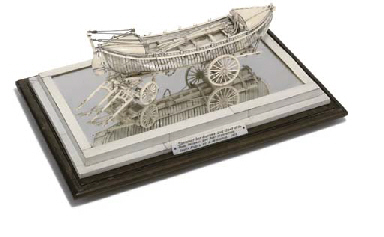
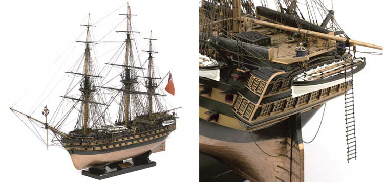
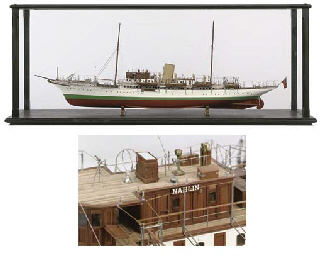
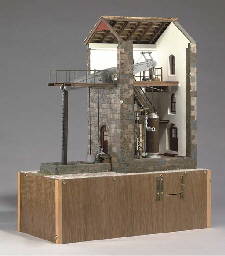
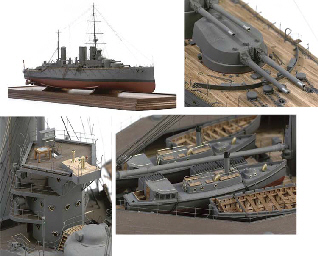

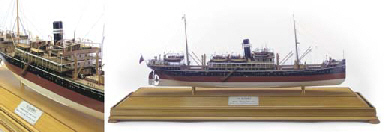
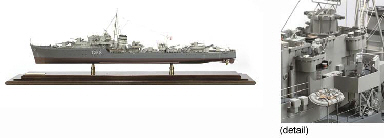
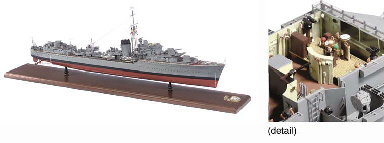


Try LotSearch and its premium features for 7 days - without any costs!
Be notified automatically about new items in upcoming auctions.
Create an alert